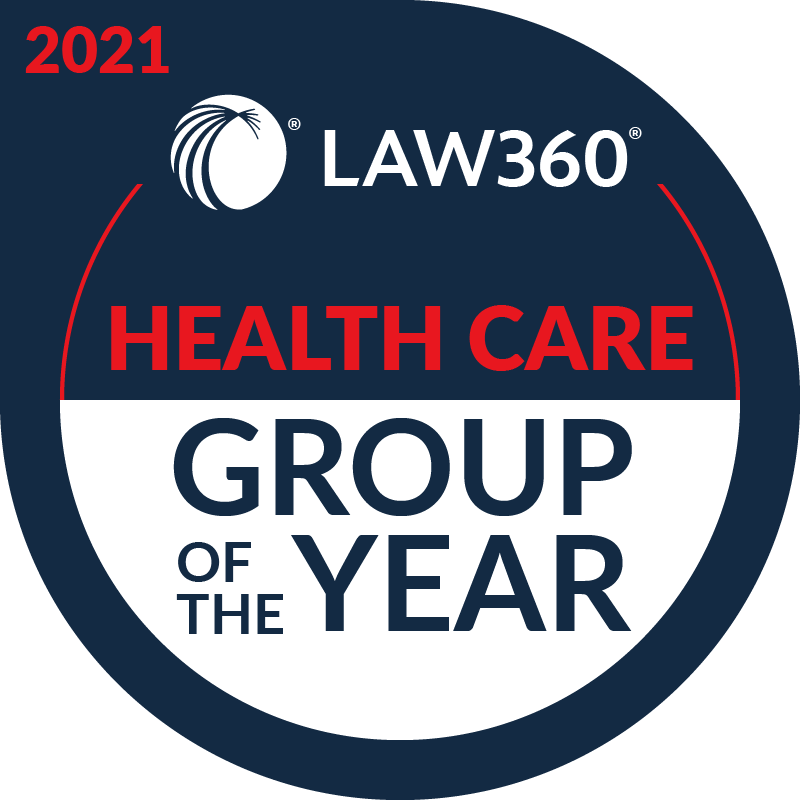The past two years saw continued growth in the digital health sector. During the virtual Digital Health Pioneers Forum hosted by McDermott and EY at the 2022 J.P. Morgan Healthcare Conference, industry leaders discussed the potential impact of disruptive forces such as artificial intelligence (AI) and tech-enabled healthcare; how data and analytics could reduce disparities in care; why the consumerization of care has brought nontraditional players to the space and how new and innovative platforms are shaping the consumer experience.
Download the PDF here.
USING TECH TO IMPROVE VACCINE RATES
The future of data analytics was addressed during a fireside chat with David Rhew, MD, global chief medical officer & VP of Healthcare at Microsoft. Dr. Rhew spoke of vaccine hesitancy and efficacy and how these issues have been addressed by Microsoft using technology to enable registration and scheduling of vaccinations and otherwise aid in the rollout of the COVID-19 vaccine. To further drive healthcare engagement, Microsoft and its partners have worked closely with local community leaders to provide resources and technology to host community-based events and deliver essential health services to underserved and vulnerable populations. Dr. Rhew believes the benefits of this approach will extend beyond the pandemic. By enrolling eligible individuals to receive insurance and connecting them to local healthcare providers, individuals will continue to receive health services even after the event has concluded.
DATA DRIVING PATIENT, PROVIDER EXPERIENCE
When it comes to the experience in the care setting, both clinicians and patients are reaching new heights of dissatisfaction. In both realms, Dr. Rhew posited, data and tech may offer an answer. That answer starts, as it does in any sort of consumer market, with familiarity that may come from a data repository, he said. “By having a good understanding of the individual where they are on their journey and how to meet their needs that’s how we deliver better experiences. With data that is now surrounding individuals that are now being able to be liberated through interoperability and allowing us to be liberated and apply AI on top of it we can have better experiences in both the consumer market and the health care market.” To change clinician experiences for the better Dr. Rhew touted taking tasks off their to-do lists and using technologies like voice to text to save time on the electronic health record to give them time back for themselves and their patients.
DATA DRIVEN PATIENT, PROVIDER EXPERIENCE
Clinicians and patients alike are reaching new lows of satisfaction with the healthcare delivery experience. For both populations, data and tech may offer an answer. That answer starts, as it does in any sort of consumer market, with awareness derived from data, Dr. Rhew said. “By having a good understanding of the individual, where they are on their journey and how to meet their needs—that’s how we deliver better experiences.” To change clinicians’ experiences for the better, Dr. Rhew supported the idea of taking tasks off their to-do lists and using technologies such as voice to text to save time documenting in the electronic health record and return that time to themselves and their patients.
NEW KID ON THE BLOCK
The pandemic accelerated the pace of consumerization and, as a result, several top retail brands, including Best Buy, are making major plays in the healthcare sector, according to Deborah Di Sanzo, president of Best Buy Health. “We are a consumer electronics retailer that helps people with tech in their home. That’s what we are going to do with health,” she said. Best Buy’s focus on healthcare will be rooted in its traditional model of omnichannel retailing and logistics. Within that, it will have three main areas of focus: consumer health (providing devices such as hearing aids), active aging (technology that allows people to live independently in their homes) and virtual care enablement (getting devices into the home and ensuring they work).
INFORMED HEALTHCARE CONSUMERS
While there has been choice in healthcare for at least a generation, access to information has never been more plentiful. Care consumers are feeling more empowered and active in the way they consider their care. Di Sanzo explained, “In our market research what our customers are telling us is that they want to shop for a physician the same way they want to shop for a TV … When somebody is buying a TV, they know the features of the TV, they know what the TV is going to cost, they know when they can get the TV, they know when the TV is going to show up at their house… and they want that same experience with healthcare.”
TAPPING INTO DIVERSE DATASETS FOR INNOVATION
When it comes to healthcare data collection in the context of research and innovation, there are two frictions in the “traditional” system, according to Deborah Kilpatrick, co-chief executive officer and executive chair at Evidation Health. The first origin point of that friction is that much of health data is generated on an individual level by people outside of clinical walls. Permissioning and aggregating that data is one part of the equation but understanding and applying that data to everyday health is the second—and perhaps more difficult—part. “By connecting to this large, diverse research cohort that we have at Evidation, we are really allowing more people to participate in research over time, on demand, and in doing so we are really redefining what everyday health measurement looks like, feels like and effectively is,” Kilpatrick said.
MAINTAINING PRIVACY AND SECURITY
Another connector in the care space, b.well’s founder & chief executive officer Kristen Valdes spoke of the evolution of privacy and security for healthcare information in the digital age. Identity verification in healthcare, for instance, had historically been accomplished in person and with documents such as a driver’s license and an insurance card. That is less frequently the case, however, as care has moved into the digital realm. “The reality is that due to the acceleration of virtual health and telehealth, which we have seen more prevalently due to the pandemic, we are now starting to interact with consumers in a virtual manner first. So the first thing that we do is authenticate and [conduct] identity verification in order to make sure that, as the move to telehealth has accelerated, b.well has moved to assure users that the person behind the screen is who they say they are,” Valdes said. From there, she added, it’s important to communicate an informed consent method to the consumer, in plain language, that explains how data will be accessed. Such clear communication is imperative to building trust.
AI AS A TOOL FOR GLOBAL HEALTH CHANGE
Dr. Michelle Perugini, chief executive officer & co-founder of Presagen, spoke of the ways in which AI can be applied on a global scale to improve health outcomes. For a developed country like the United States, AI’s application is a bit less urgent, she said. But for developing countries, Dr. Perugini said, “They have a massive shortage of skilled expertise. It’s coupled with poorer-quality health services and generally higher healthcare needs…AI has the capability to bring that global intelligence from around the world into each and every clinic and out to every patient globally. But in order to do this, it needs to be scalable, unbiased and equitable, and therefore affordable and accessible to all of those different types of patient demographics.”
DATA TO DRIVE VALUE
Data can drive both improved health outcomes and value for payors, as evidenced by the work done by Covera Health, a data analytics company operating in the radiology space. Dr. Rick Abramson, the company’s chief clinical strategy officer, spoke of a model Covera implemented to identify high-quality radiology practices and imaging centers. After identifying them, the company then worked with payors to construct their networks around these high-performing providers. The result was greater than 10% reduction in the total cost of care (over $2,500 per member) for beneficiaries who worked within that program. “This is a model that we at Covera really believe in. It’s been so successful that it makes one wonder why we don’t see these payer-provider partnerships popping up all over the place, just happening naturally,” Dr. Abramson said.
To catch up on all of the sessions at the McDermott and EY at the 2022 J.P. Morgan Healthcare Conference, please click here.






